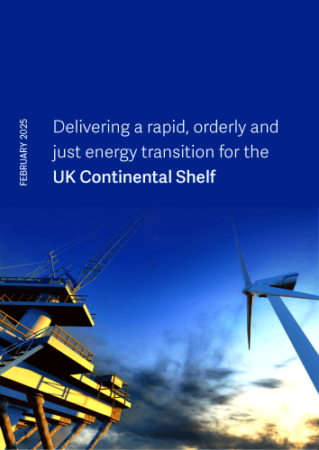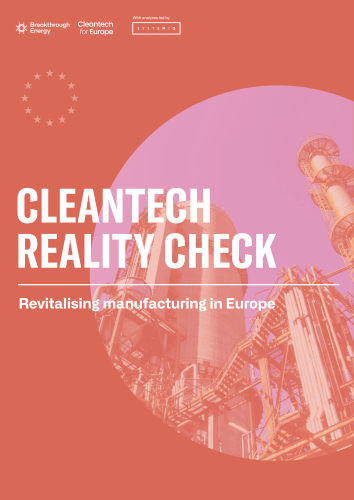The report Achieving Growth Within, written by SYSTEMIQ in collaboration with the Ellen MacArthur Foundation and sponsored by the SUN Foundation, identifies priority investment opportunities that could provide a major source of regenerative growth and unlock economic, social and environmental benefits, as well as mitigating the risks associated with investing in conventional assets in an era of rapid change. The report was launched at the World Economic Forum’s Annual Meeting in Davos in January 2017.
Scaling the circular economy in Europe offers investment opportunities totalling €320 billion. Businesses and governments could benefit from promising investment outlets, and harness the competitive advantage brought about by a circular economy transition.
“Building on the analysis of our 2015 report Growth Within, which demonstrated the additional €0.9 trillion benefit for Europe by 2030 from shifting to circular economy practices, this latest report outlines the first steps needed by businesses and governments to realise these benefits. As our current linear growth model becomes increasingly challenged, this research shows how Europe can begin to exploit new opportunities for innovation, growth and resilience, gradually decoupled from resource constraints.”
— Dame Ellen MacArthur, Founder, Ellen MacArthur Foundation

With a focus on the sectors of mobility, food and the built environment, which together account for 60% of European household spending and 80% of resource use, Achieving Growth Within identifies investment ‘hot spots’ which would, by 2025, create an additional 7% GDP growth, reduce raw material consumption by an additional 10%, and produce 17% lower annual CO2 emissions, compared with the current development path.
Enabled digital technologies, these ten investment ‘hot spots’ have the potential to scale rapidly (amount that could be invested by 2025 in brackets):
- Mobility (€135 billion)
- integrating public transport systems with shared vehicles;
- designing and producing zero-emission cars with re-usable components;
- remanufacturing car components at scale
- Food (€70 billion)
- shifting towards agricultural practices that regenerate soil and ecosystems;
- scaling nutrient and energy recovery from waste;
- scaling indoor urban farming methods;
- developing new protein sources
- Built environment (€115 billion)
- designing and producing multi-usage, modular, energy-positive buildings from durable, non-toxic materials;
- boosting re-use of building materials;
- integrating circular economy principles into urban design and development
“In our study we asked a very fundamental question: what would it take to make Europe attractive to industrial investors? With the help of 50+ experts from the private and public sector, we found that the potential for growth is high and the risk of stranded assets is low. We found these investment themes across the mobility system, food system and the built environment. Each of them looks very different versus traditional linear investment themes: they are not investments purely in new technology or new products – rather in new systems and require a new investment approach altogether.”
— Prof. Dr. Martin R. Stuchtey, Co-Founder, SYSTEMIQ
These ‘hot spots’ are in line with the EU’s long term circular economy strategy and could be kick-started with modest enabling action by policymakers at European, national, regional and city level. Such action is needed to create a policy framework that sets clear direction, removes barriers and facilitates cooperation and innovation, and re-focuses public procurement, investment and existing subsidies towards the priorities identified.
These ‘hot spots’ are in line with the EU’s long term circular economy strategy and could be kick-started with modest enabling action by policymakers at European, national, regional and city level. Such action is needed to create a policy framework that sets clear direction, removes barriers and facilitates cooperation and innovation, and re-focuses public procurement, investment and existing subsidies towards the priorities identified.
According to the report, acting quickly is key for business leader who want to take advantage of ‘first mover’ opportunities within the ten investment themes, in parallel with scaling back investments at risk of becoming obsolete (‘stranded’). The circular economy provides attractive opportunities for businesses to build resilience and growth through innovation in product design, business models, resource flows and value creation. Furthermore, circular economy principles offer a new lens through which to assess investments and mitigate the risk that assets will become ‘stranded’ as markets are disrupted by digital technologies, and prices are increasingly required to reflect the environmental and other costs of business activities.
“SUN is pleased to contribute – through this report – to the further development of the circular economy model, which is transforming economic debate in Europe. This report is in line with SUN’s goal of contributing to activities that can help to realise a double dividend of economic and environmental benefits.”
— Dr. Klaus Zumwinkel, President of Deutsche Post Foundation and SUN




